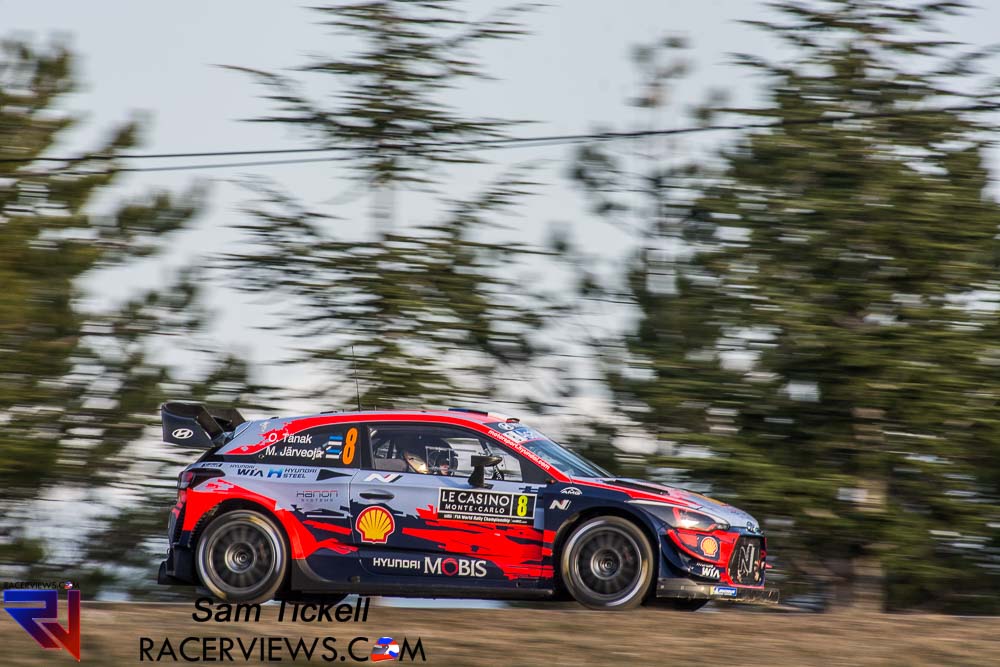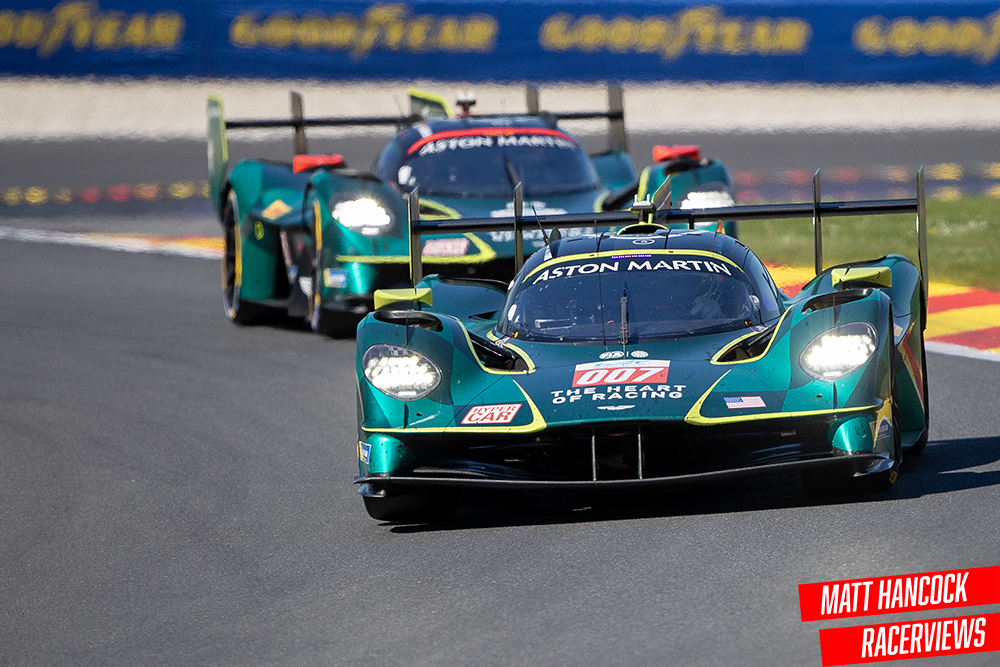First thing is first. We cannot underestimate the strength of the modern WRC cars. Ott Tänak’s crash in his Hyundai was nothing short of frightening.

He left the road at some 180km/h. The car rolled and rolled but as Hyundai team boss, Andrea Adamo said in the Meet the Crews session, “The job has been done to make the cars safer. What has become a very spectacular accident for everybody, and I’m sorry if I’m boring you with this, but it is dissipating the energy. “
“What is always worrying me the most is when something is not spectacular, but it’s going from fast to zero in next to no distance.”
Still he did temper his statement with..
“Normally I’m always having a big heart rate when it’s like this. But when I first saw it (the crash), I almost said something I couldn’t say.”
The fact that the crew was able to walk out of the crash is testament to the safety of the current cars.
But let’s take a look at the corner. We all love the crazy Tänak style. His raw pace is undoubted. He wouldn’t be Champion otherwise. There has been some speculation on Twitter and the like if something broke.
But we (and some friends, hat tip to Julian) have taken a look at some of the onboards from the excellent WRC+ service.
Tänak entered the section at some 180km/h, cut the inside, the car was unsettled and he was unable to make the apex. He ran wide and, well, you have seen the results (also below).
El escalofriante accidente de @OttTanak y Martin Järveoja a 170 km/h – Pilotos ✅
🖥️ Sigue el #RallyeMonteCarlo en directo en https://t.co/0nWOJAkkTv
🖊️ Comenta con el hashtag #WRCliveES pic.twitter.com/DZEBRa79Cx— WRC – FIA World Rally Championship (@OfficialWRC) January 24, 2020
But what of the rest of the drivers?
It seems that no one else had thought the corner was so fast.
From the on-board (I think) Dan Barritt beside Takamoto Katsuta calls a ‘’7 right, sudden short 8 left over crest”.
The responses from the other drivers is interesting. The point in the stage was around 5min 30 seconds in so many drivers may have gotten the note that Tänak had a heavy crash there.
But no one – not even the early drivers tackle it with such pace as Tänak.
Elfyn Evans and Sebastien Ogier both take the complex at around 160km/h and Ogier get a little sideways going into the left. It seems there was not a lot left at that point – so perhaps we can assume this was ideal speed for the corner.
We can also assume those two would have been on stage before the crash happened.
Tänak was around 20km/h faster.
Thierry Neuville and Sébastien Loeb, the other Hyundai drivers were very much slower than Tänak. We can assume these two would have been waiting for the start, and they may have gotten word of the crash before they started.
Long time since Tanak made a mistake as big as this. Thank goodness crew are ok
https://t.co/qKDCAXevLC— Colin Clark (@voiceofrally) January 24, 2020
Both the these cars went through that complex at 130km/h, some 50km/h slower than Tänak and quite conservative even to their rivals.
The remaining Toyotas were also less on edge with Kalle Rovenpera going at 140km/h and Katsuta at 130km/h.
The M-Sport Fords still kept a little more pace with Esapekki Lappi going at 155km/h and seeming in control while Teemu Suninen was at 160km/h and very wild on the exit of the left The car was quite sideways as he tried to keep it on the black stuff.
So it seems that 160 was the limit for that short right-left combination. Tänak was just over the limit and instead of a smooth road edge or barrier to keep him in the rally, he found a bit of a hump and giant drop.
The end result was spectacular and we can thank our lucky stars that there was no sudden stop nor the tree hit in the wrong spot. But the result also didn’t come from luck. The research and design into safety of these cars is very impressive.
When you look, and truly look at the safety of the current generation of WRC cars, you see a lot of side impact, a lot of safety. You watch the onboard and the driver compartment looks calm.
https://www.facebook.com/RacerViews/posts/3381504428586561?__xts__[0]=68.ARCRnElgqFDRZyvWgKr60eHwtkjv_ZRkPRSS3oIDKxnBXj2pgjuJP0PLrBElXk6DhIYG-4aHu8V5Y2LHswLvPTnJBTPsXB-Z8LUiZAI1CJnPAbEVBNkD8lqnNNl_5RNoxT2bj494nmXXp-FRd9DTdU8I7b02UhLJpS318qefUIw0H23FZrivxXk-jXf0_fGeY8198keqeAiAWzQwy_MNN0E3rm8shkF3TkQtN-wftAZq_uLxuAMCcn28PYcIHF61-6RL_vmW0p34OaA10GOYy24L7likhwQhFasNlAUEe24QWHQVBEiq_9IEIKEUdbrJJhuxq_-s7g1pZj-Xg-99iBa3spYT37gxUM6lk9aqiZWKqzEu0kmjgF5soRzapKrPTDGVuxxrB0mOVEMio-E5aCeS30cyZbKzXQr9mw_lLTV1W5n5OrQYwsRHTqiSB-FWuELaJjiClPLBRQdJWGGaa_PuhPeqc3aj4NWQb45XM1YdZdaDgqyRulSRmg&__tn__=-R
You go back to even the last generation of WRC, or the early 2000s WRC that you can find on some rallies and they seem a little agricultural (obviously they aren’t). But when I see some of the older cars, I can be very surprised at the difference to the current generation car.
No doubt this helped Tänak and Martin Järveoja walk out of the car.
For the Champion duo though, it may have been nothing more than an over-enthusiastic pace note. Most times the result is nowhere near as dramatic as this.
But this time, the result – in many ways – was incredible.
===
By Sam Tickell on location at WRC Rallye Monte Carlo




